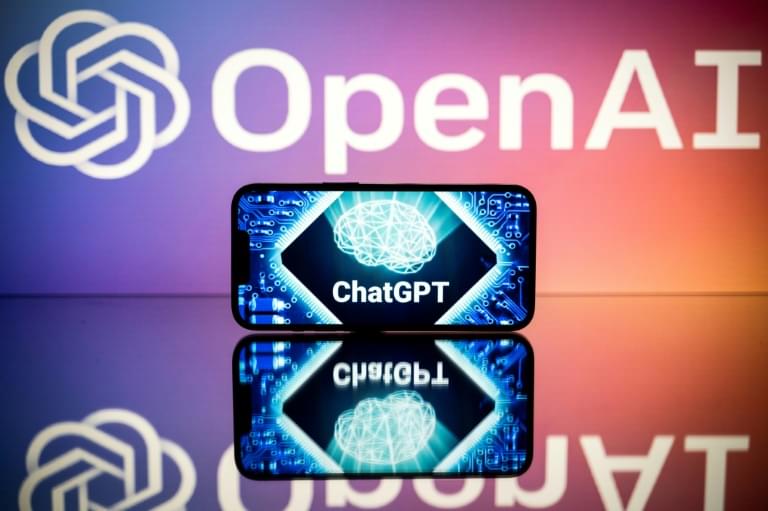CNBC’s Deirdre Bosa reports breaking news on more Amazon layoffs.
Category: employment – Page 36
GPT4 Can Replace Jobs
😗 I am actually pretty happy about this because full automation will simply life rather than needing as much education the AI can do most of the work much like the star trek computer. Full automation will allow for more freedom even from common tasks allowing the AI to most of the thinking and tasks.
A senior developer tested GPT4 for programming. GPT4 gave the Terraform script code for a single instance of the Fargate API. GPT4 knows that the code will not scale to 10,000 requests per second. It then describes how to create an auto-scaling group and make the modifications to scale the code with AWS and configure the application load balancer.
NOTE: his prompt was way more detailed than an ordinary person would produce. An ordinary person would not be able to verify the results either. You can make the case for 10x or 100x programmer productivity. A senior developer can become a programming lead or manager guiding the AI prompt requests from the equivalent of multiple programming teams.
The advantage will not be to let people who do not know a topic to play with powerful tools. The advantage is to increase the productivity and capacity of competent people to do more in areas that they understand. The AI tools will uplevel the productivity in areas where you know what can and should be done. You do not want someone who does not know how to drive behind the wheel of a Formula One race car.

How AI could upend the world even more than electricity or the internet
The rise of artificial general intelligence — now seen as inevitable in Silicon Valley — will bring change that is “orders of magnitude” greater than anything the world has yet seen, observers say. But are we ready?
AGI — defined as artificial intelligence with human cognitive abilities, as opposed to more narrow artificial intelligence, such as the headline-grabbing ChatGPT — could free people from menial tasks and usher in a new era of creativity.
But such a historic paradigm shift could also threaten jobs and raise insurmountable social issues, experts warn.

Our Gattaca Exclusive Confirmed By The Hollywood Reporter
Our trusted and proven sources were correct once again, as just hours after we broke the news that a Gattaca series is in development at Showtime, The Hollywood Reporter confirmed our exclusive. One of our writers here at Giant Freakin Robot wrote just two weeks ago that the 1997 dystopian sci-fi classic would be perfect as a television series, and it’s amazing how quickly we went from hoping it would happen to confirming that it is. The new series will be coming from the creators of Homeland, Howard Gordan and Alex Gansa.
As noted in our initial report, this is not the first time the film, starring Ethan Hawke, Uma Thurman, and Jude Law, has been optioned as a series. Back in 2009, Sony attempted to turn the movie into a procedural from Gil Grant, a writer on 24 and NCIS. The underrated cult-classic movie is ideal for transforming into a prestige series on a premium network as its themes on transhumanism, genetic manipulation, and a stratified society have become more relevant as technology leaps forwards every year.
In Gattaca, eugenics separates society into “valids” and “in-valids,” even if genetic discrimination is illegal; that hasn’t stopped businesses from profiling, giving the best jobs to the former and only menial labor opportunities to the latter. Ethan Hawke plays Vincent, an in-valid with a heart defect that uses samples from Jude Law’s Jerome Morrow, a paralyzed Olympic champion swimmer that’s also a valid. Using the purloined DNA, Vincent cons his way into a job at Gattaca Aerospace Corporation, eventually being selected as a navigator for a trip to Saturn’s moon, Titan.

On track: A bullet train from Las Vegas to Los Angeles by 2027
A green bullet train capable of touching 200 miles per hour
The proposed 218-mile high-speed network will connect Las Vegas and Southern California with technology that allows it to maintain a cruising speed of 200 miles per hour (321 km/h). This means the travel time between the cities will be just over an hour. In comparison, a journey by car takes over four hours.
The expenditure on the project is expected to provide a much-needed boost to the economy, including the creation of nearly 35,000 jobs during the construction phase and around 10,000 permanent jobs. According to Brightline, the fully electric, emission-free system will be one of the greenest forms of transportation in the U.S., removing 3 million cars and 400,000 tons of CO2 each year.

Meta to cut another 10,000 jobs and cancel ‘low priority projects’
The news comes after 13 percent of the company was cut in November. ‘This will be tough and there’s no way around that,’ CEO Mark Zuckerberg told employees.
Meta will lay off an additional 10,000 employees through multiple rounds of cuts over the coming two months, close hiring for 5,000 open roles, and cancel more low-priority projects, CEO Mark Zuckerberg announced on Tuesday. These cuts come just four months after he laid off 11,000 employees, or 13 percent of the company, last November.
Meta plans to cut its workforce by another 10,000 people and withdraw around 5,000 open roles that it had yet to fill, company co-founder and CEO Mark Zuckerberg said Tuesday, confirming recent rumors that another round of layoffs was imminent.
Zuckerberg also said that the company will cancel “lower priority projects,” adding that he “underestimated the indirect costs” associated with these initiatives.
The announcement comes just four months after Meta revealed that it was eliminating about 11,000 roles as the social networking giant pushes ahead with what it’s calling a “year of efficiency.” Combined, this means that Meta has effectively laid off — or plans to lay-off — roughly one-quarter of its workforce since the tail-end of last year.

Mark Zuckerberg says engineers who joined Meta in-person perform better than those who joined remotely
Mark Zuckerberg, co-founder and CEO of Facebook parent Meta, has pointed to internal data analysis that suggests engineers who initially joined the company in an in-person capacity performed better than those who joined remotely from the get-go.
He also suggested that younger engineers, or more accurately those who are “earlier in their career,” perform better when they work with colleagues in-person for at least three days each week.
The insights stem from a memo sent to employees earlier today, in which Zuckerberg revealed the company was cutting another 10,000 jobs. Aside from announcing the fresh round of layoffs, Zuckerberg delved into a number of ways the company was looking to improve efficiency, such as cancelling “lower priority projects” and creating a flatter organizational structure by removing various management layers.

These Are the Jobs Most Vulnerable to AI, Researchers Say
Wondering if artificial intelligence will be taking your job anytime soon? We’re sure we speak for a lot of folks when we say: same.
Considering that AI is literally designed to model human capabilities and thus automate human tasks, it’s a fair question — and one that a group of professors from New York University (NYU), Princeton, and the University of Pennsylvania (UPenn) may have just helped to shed a little bit of light on in a new paper, aptly titled “How Will Language Modelers like ChatGPT Affect Occupations and Industries?”
Though the paper has yet to be peer-reviewed, the results are fascinating, not to mention ominous — especially, of course, for the folks most at risk.

Book review: Believing in Dawkins
Among “the jobs once done by God [that] can be done by natural entities” there is life after death. Dawkins “frequently affirms that there is no life after death”, but Steinhart shows that this is inconsistent with Dawkins’ own convictions. Dawkins “should have argued that false religious theories of life after death can be replaced with more plausible scientific theories of life after death” [**].
Steinhart describes two plausible scientific theories of life after death: promotion to the higher level of reality of the simulators, and revisions of entire lives in new universes, each better than the previous life and universe. Worth noting, promotion could preserve memories and implement “the ancient idea of the resurrection of the body.” These theories of life after death are only sketched in this book, see Steinhart’s previous book “Your Digital Afterlives: Computational Theories of Life after Death” for more. See also my review of “Your Digital Afterlives” in “Tales of the Turing Church” (Chapter 12).
In summary, Steinhart builds a thorough and philosophically consistent spiritual naturalism, inspired by Dawkins, which offers the main mental benefits of religion. I like (actually I love) philosophy, but I try to keep mine as simple and working-class as possible, because many people don’t have the patience (or the time) for too much philosophical sophistication. I think the two approaches are complementary. So I use the term “religion” for the spiritual naturalism of Dawkins and Steinhart, and I use the simple term “God” now and then.

Tesla’s $5bn Mexican plant is set to become its largest facility, producing 1m electric cars a year
Tesla held Investor Day 2023 this week and announced the construction of a new plant in the Mexican state of Nuevo Leon. The new facility will be Tesla’s largest production facility.
Here’s What We Know
Elon Musk’s company will invest $5 billion to build the Mexican plant and create 5,000–6,000 jobs. Over time, however, the amount of investment and the number of jobs will double.